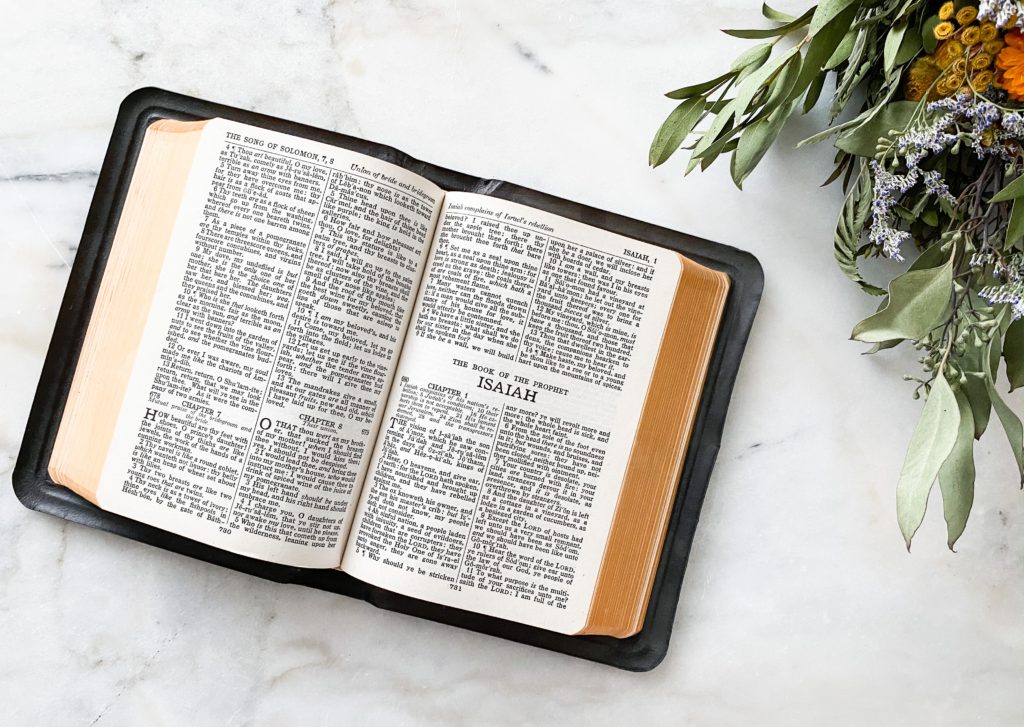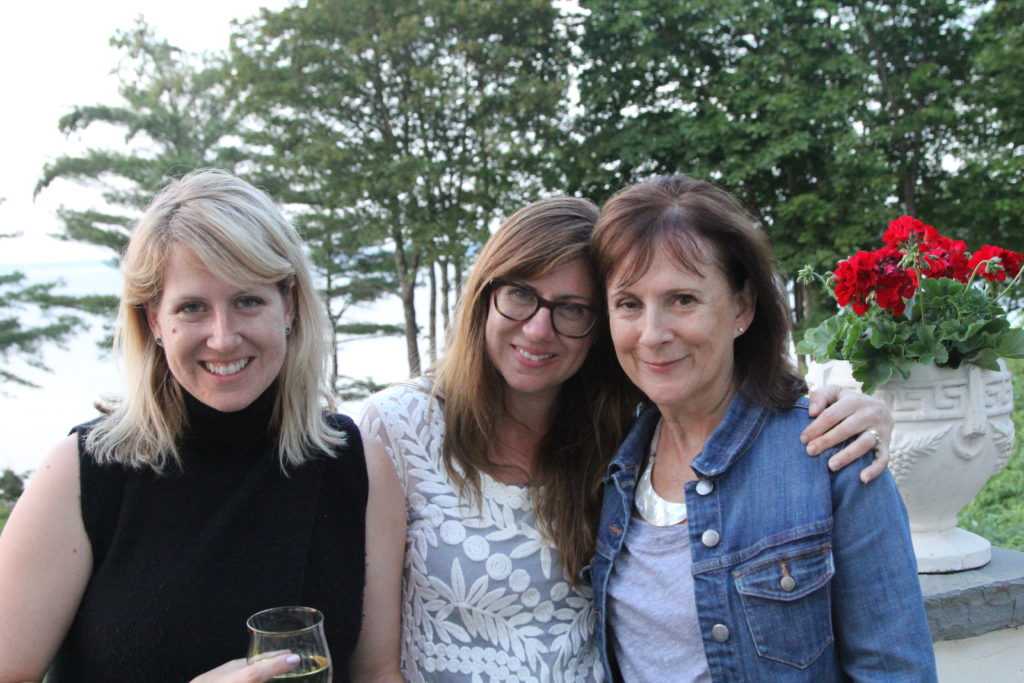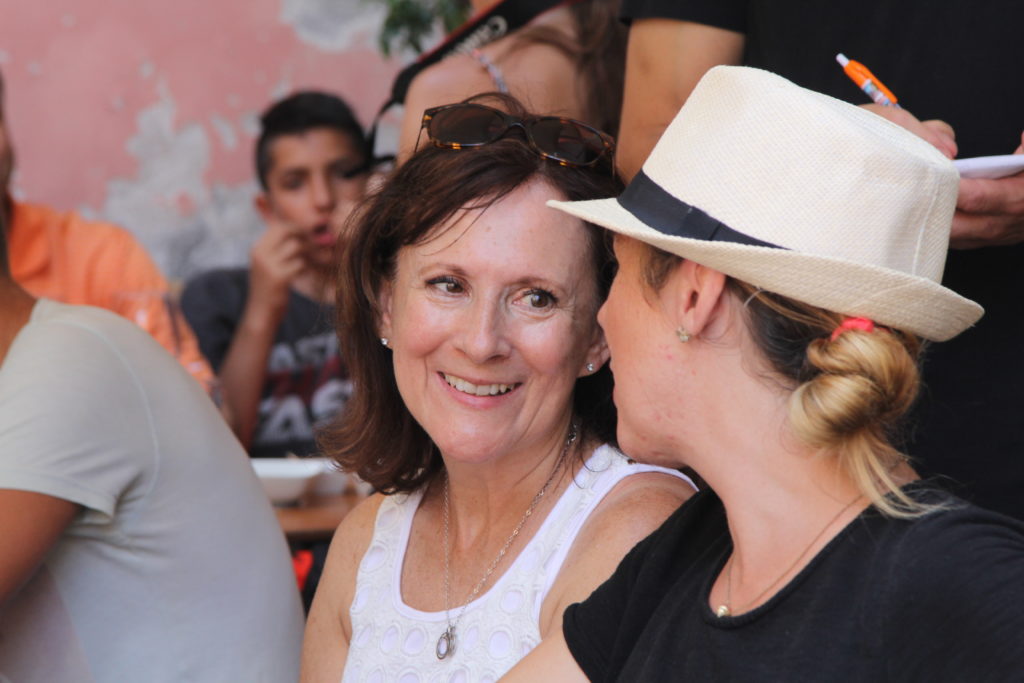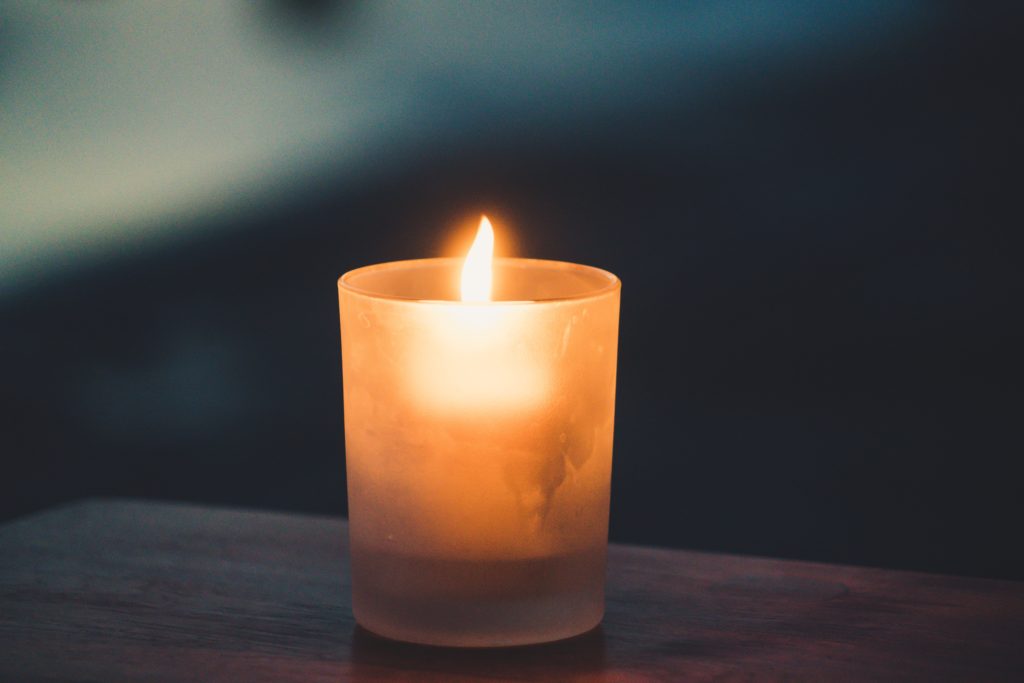Ever open your Bible, corners worn from years of use, only to find the words…
Lecio Divina: Transformation through Fixing our Eyes on Jesus

Here in the Presence Project we’re in a series on lectio divina which again means, divine reading, or even more simply, reading slowly WITH God. In the last episode we talked about our tendency to stay in task mode when reading the scripture and what happens in our connection with scripture when we’re in relationship mode. It changes everything. Each word has weight. Each word becomes a part of the conversation, a part of our shared life WITH God.
Do you remember those first few months with your loved one? In your long conversations over coffee you become a scientist, a collector of stories, fragments of the complexities of this person. You excavate, using a delicate pick, a fine brush, gently holding his stories as you get a more complete picture of him. You walk into his parents house and imagine him a part of the story they’re telling and see parts of his personality come to the forefront, parts recede. You go on a hike into the mountains and hear about his camping trip in New Hampshire, the shelter he found on the edge of a cliff, the early morning wake-up by the sun touching the world with gold. You spend a day in the city and toss back and forth stories about both of your travels and all of a sudden Paris is more alive as you imagine him walking along the Seine and suddenly you love the city of lights even more.
You live with a daily fascination which kindles into love.

This is our invitation as we sit in lectio divina.
Lectio divina slows us down enough to look into His eyes and become fascinated by his gestures, his insight, the intricacies of his character. We look down and read and then look up and say: you who turned water to wine, you’re here? You who wept at the funeral bier of a widow’s son, you’re here? You, the lamb on the throne, the resurrection, the prince of peace, the light of the world. You’re here. And we fall silent in awe. In wonder. We fall silent in His Presence.
We collect the self-revelation of God in order to walk through our days in wonder and worship. And as we become fluent in worship, in the hard of life, we come back to this collection, we turn each discovery over in our hand. Our love, our worship, take us outside of ourselves. Our story is enveloped in His long narrative arc of redemption. Our present circumstances begin to recede. And in our worship, we find Him coming near.

That’s what this next story is about:
Linda Dillow, an author and women’s ministry leader, wrote a story of how she walked with a young mom through cancer in a magazine Discipleship Journal. Here was the story of Debbie, name changed. Debbie, a mom of three young kids, was going through the long journey of cancer. Some days Linda sat with this mama in her darkness and just held her hand. She listened to her lament with tenderness. She stayed silent. She stayed present. Other days she opened the curtains and let in the light. Eventually, Debbie began to ask for more light. More of God. More of God’s story. This mom craved the confidence that her story was hidden in His.
And this is what Linda gently taught this mama: and I promise you this sounds embarrassingly simplistic but when we’re living in fear, simple is all we can handle. She invited Debbie to write God’s attributes, his names one by one and organize them according to the ABC’s. At first her fear paralyzed her and Linda walked through each step.
He is… All knowing. All Powerful. Advocate. Alpha and Omega. Abounding in love
B: Beautiful. Bridegroom. Bountiful.
C: Creator. Comforter. Cornerstone. Consuming fire.
You get the idea. As she soaked in the truth, she watched her faith grow and her fears find their place in the light of His character. Linda invited Debbie to go through this list each day, to keep adding, to gaze on the light of Christ, to be warmed by the fire of his presence.
Debbie began to hide in the light even during chemo treatments. She fell asleep counting on the character of God as a way to rest in Him.
Faith is built one rock at a time, one truth of God’s character firmly resting on another.

There are 2 invitations for us when we’re walking through pain either alone or in community: 1. Lament and 2. Worship.
We’ll say a lot more about this in the future. Let’s just start by saying the American church has forgotten how to lament but David points the way in the Psalms. Did you know there are more lament psalms than praise psalms? The book of psalms is our first training manual for prayer. David teaches us that prayer is uncensored emotion poured out before God. And he reminds us that God treats our pain with tenderness. He never turns away thinking we’re too much, that our tears are embarrassing. He always has time for us. He is attentive, responsive, and engaged with his children. No child has to yell to get his attention. He wants to sit down with us in the dust of our story.
But, this usually begins with a human face attentive to the motion of our soul. Finding a spiritual director or a good friend who’s able to listen to our lament, is a necessary component to what it means to be human. We need other brains. Our brain integrates best when looking into the eyes of another empathetic person because there are times we can’t point to the light on our own. There are times we cannot pray on our own. This is why we need our people. We need our church. We need to be willing to do the hard work of saying yes to community, of allowing others to throw open the curtains on our lives.

But here’s invitation number 2 when we’re walking through pain and its not either/or, it’s both/and: To lament AND To Worship. To pour out our lament and to also lift our eyes to the throne, fix our eyes on Jesus, to find our story within his larger story.
What follows is a sermon still in the style of the Presence Project I preached this last Sunday at St. Thomas in Athens, GA.

This Wednesday is Ash Wednesday and so this Sunday is the end of the season of Epiphany which is often just a pass-through season, a hallway of a season from Christmas to Lent. But, I believe these scriptures, of which today’s gospel about the Transfiguration is the pinnacle, is deeply intentional by the architects of the church year. Epiphany is a season about God’s revealing himself to his people in one story after another. It’s a season where we are encouraged to watch, to witness, to wonder, and to worship, to fix our eyes on Jesus.
This is best done in community. Because the truth is that we need community to point us back to Jesus, to be amazed by His character, and let the light back in when we’re stumbling through the pain of a broken world.

So I’m wondering when it was these stories in Epiphany were first brought together to try to make sense of who Jesus was.
I imagine the disciples, along with Mary, Jesus’ mother sitting around in a room between the crucifixion and resurrection looking at each other and saying, what just happened? Who was this Jesus? Were we mistaken? Was he just a man? Was he just a good teacher? Were we taken in?
And so together they’d bring out the stories about Jesus, one after another. Because that’s what the Israelites were taught to do, remember the stories of God, to build their faith, to be re-made by the stories which had made them.
Mary may have retold the story of kings from the east, bursting through the door on their little family, bringing gifts fit for a king. Then perhaps James by the light of a candle would remind everyone of Jesus baptism and the revelation of the Trinity, the dove descending, the unmistakable voice of the Father acknowledging Jesus as his beloved son. Perhaps John would remind them of John the Baptist in the town along the Jordan River pointing to Jesus as he walked by and saying with prophetic authority, “Here comes the Lamb who takes away the sins of the world.” And then maybe it was the disciple Matthew who brought out the list of prophecies which had been fulfilled throughout the life of Jesus like the Isaiah scripture in week 3 of Epiphany talking about where Jesus ministered: “land of Zebulun and the land of Naphtali,
The people who walked in darkness
have seen a great light;
those who lived in a land of deep darkness–
on them light has shined.”

And Mary again, retold their trip to Jerusalem from Bethlehem to present the 40 day old Jesus at the temple like we hear about in week 4. And how the righteous man Simeon and the prophet Anna were waiting patiently for the Christ child, and how Simeon gently took Jesus in his arms and said with tears, looking up to God, “My eyes have seen your salvation.”
And then all of them in a chorus would remember healings, and miracles, the feeding of the 5000, the raising of Lazarus’ from the dead.
But then I imagine Peter would drop today’s story like the Ace card that it is, the Transfiguration. Christ’s divinity revealed in light. Moses and Elijah appearing with him. And they all would fall silent in wonder and worship, their faith strengthened for the next stage in their journey.
And so this is what we do every year in Epiphany as we pass this way on the church calendar. We again ask this question: who is this Jesus? and with one curated story after another, like pictures on a museum wall, God points out his son, our Savior for us to gaze in wonder.
Because this is what we the broken need, to look up and out of ourselves, to overcome our desire to control our circumstances and Behold the Beauty of the Lord.

We need to be startled out of our self-focus to gaze on his brightness.
This was the gift Jesus gave the three disciples who were his inner circle, Peter, James and John but especially Peter and I’ll tell you why in a moment.
Just a quick aside: Jesus had circles of community. The 70 he sent out to minister. The 12 disciples. But these three John, James, and Peter were invited into Jesus’ private moments. Life in God is life in interconnected community. The Trinity itself, Father, Son, and Holy Spirit, IS a community. Even Jesus while he walked our dusty roads did not do life by himself. In fact, on the night he struggled in the Garden of Gethsemane with the anguish of his coming death, he chose these three to stay awake with him. He was asking for their friendship, their care, and the ministry of their presence. If Christ knew that he needed others, how much more do we?
We cannot stay awake to the light of Christ alone.

Does this shock you? Even Jesus needed people. The American value of independence is counter to life in Christ.
We’ve all been hurt by people and by the human messiness of the church. I invite you to share this pain with safe people, to let us lament with you, and then I invite you this Lent to ask the Spirit to heal you enough to be able to move back into community. We get hurt by community but the truth is that our healing also comes from community.

But let’s turn back to Jesus taking a hike up the mountain with Peter, James and John.
This entire passage begins with what you might think is a throw away phrase: “After six days Jesus took with him Peter, James and John the brother of James, and led them up a high mountain by themselves.
But “after six days” is not a throw away phrase.
1. 6 days before Jesus asked his disciples THE crucial question at the heart of all four gospels, “Who do you say I am?”
And after others tiptoed around the question, Peter dove in with this profound statement: “You are the Christ, the Son of the living God.” And you recall the story: Jesus answers Peter with a resounding yes: “Peter, you are a rock. And on this rock the church will be built.”
But then (and maybe you remember this too) directly after Peter answered THE question, Jesus explained how this saving would be accomplished through suffering, persecution, and death and then his bodily resurrection after three days. And do you remember Peter’s response? Peter was utterly appalled. As Any one of us would be. He was looking for a conqueror, not a suffering servant. Peter had plans which included swords, an army and a coup to overthrow Roman dictators. And that’s when Peter took Jesus aside to admonish him. And just as quickly Jesus rebuked him saying: “Get behind me Satan.”
The highs and lows of spiritual growth all within one short passage. Peter’s head must have been dizzy from the fall.
And so this is how we enter the story of the Transfiguration, still hearing the echo of these great exchanges: 6 days later Jesus invites Peter, John, and James on a hike winding up a mountain side.
As they took steps over the trail, Peter must still have been trying to untangle this puzzle from 6 days before.
And this is what I want you to hear:
The Transfiguration was Jesus’ answer: He decides not just to tell them who he was but to show them. In a spectacular illustration of every English professor’s admonition to their writing class: show me, don’t tell me, Jesus gives them an icon of the true.
He knew they would need this magnificent revelation of Christ etched into their memory in order to take them through the confusion and the suffering which was coming. He wanted them to have not just a didactic statement to ponder, but a visual encounter with his glory, an episodic encounter.
After their climb up the mountain, Jesus begins glowing in a white light. The veil of dusty earth was dropped and the mystery which was only hinted at before was on full display before them. Even his clothing shone with light as if his divinity and humanity were interwoven through every fiber. Here he was: Alpha and omega, Creator, Victor, the God and commander of angel armies. Jesus on the throne. As they gazed in awe, Christ victorious, Christ divine was burned into their retinas.

And Jesus, bright as lightning, has a conversation with Moses and Elijah, two important representatives of the Old Testament, representing the law and the prophets. And here Peter is provided with this truth: Even Moses and Elijah are on board with God’s plan.
Still Peter tries to insert himself:
“Lord, it’s good for us to be here. If you wish, I will make three shelters here, one for you and one for Moses, and one for Elijah.” When Peter offers to make three shelters for Jesus, Moses, and Elijah, we cringe because he’s a mirror for us. Whenever we cringe when we see pride, it’s because we recognize it. We have no earthly idea how to just gaze, how to worship, how to be silent in the face of the holy.
We don’t know how to “Let all mortal flesh fall silent” as the hymn says.
Because we get stuck in resentment, stuck in fear, stuck in unforgiveness, we need to be startled by beauty. Because we get stuck in reactive behaviors, or even stuck in our well-sculpted plans like Peter, we need to be startled by glory. And more than anything, we need to be shaken awake by a deeper revelation of Jesus.
GK Chesterton said, “We are perishing for lack of wonder, not lack of wonders.”

In worship we recognize we are not the main characters of this story, Christ is.
We are bit parts. Beloved bit parts but bit parts none the less. And we receive the relief of our smallness.
Our tiny story fits inside the arc of His great redemption narrative. We don’t need to puff ourselves up to have value. We don’t need to produce numbers and references. As we worship, we look up and out of ourselves at He who has saved us, who IS saving us, today and tomorrow.
Here’s a quote from William Temple’s, an Archbishop Of Canterbury from the 1940’s:
“Worship is the … chief remedy for that self-centeredness which is our original sin.”

God the Father doesn’t let Peter finish his sentence. He interrupts with a cloud and the firmness of his voice, “This is my son whom I love, with him I am well-pleased. Listen to him.”
When the disciples heard this, they fell on their faces and were terrified. But, (and listen to the tenderness of this moment,) Jesus came and touched them, saying, “Rise, and have no fear.” And when they lifted up their eyes, they saw no one but Jesus only.
I’m going to slow down these last few verses and give us time to sit in the presence of God, mulling over these words and asking God what He’d like us to take with us.
Moment of silence:
“This is my son whom I love, with him I am well-pleased. Listen to him.”
When the disciples heard this, they fell on their faces and were terrified. But Jesus came and touched them, saying, “Rise, and have no fear.” And when they lifted up their eyes, they saw no one but Jesus only.
What word jumps out at you?
Is there an invitation within that word?
What would you like to tell Jesus about what’s stirring up within you?
Lord, give us a fresh revelation of who You are.
Amen.

When I wrote and preached this sermon, we were in Epiphany. Now we’re solidly in Lent and I wonder what kind of practice you may want to bring into this next 40 days. What might God be inviting you to fast from or what might He be inviting you to build into your schedule?
Here are a few ideas for Lent:
1. Wrestle with the word in community. Do Bible study or do lectio divina together with one friend or with a small group.
2. Find an empathetic friend who is able to listen to your lament and sit with you in the twists and turns of your human story. Find someone safe. Don’t filter. Don’t screen your words. Don’t try to make your emotions presentable. Be an empathetic listener in return.
2. Here’s another idea for Lent: Create white space for God to speak. Make your smart phone into a dumb phone for the next 40 days. Recognize what happens in your soul as you take various levels of fasts.
3. Choose intentional times of silence to do self-examination. Ask yourself – today, when did I turn towards God? When did I turn away from God?
4. Perhaps you’d like to create a rhythm of worship, an A-Z of the character of God you meditate on as you fall asleep like Linda taught Debbie, a Spotify playlist that lifts you to the throne, or cull through the Bible to create a collection of scriptures which invite you to gaze at Jesus.

Photos throughout are a mishmash of family photos and photos from unsplash by these fantastic photographers: Priscilla Du Preez , Thomas Kinto, Ilja Tulit, Philipp Cordts, Paolo Nicolello, Rayia Soderberg